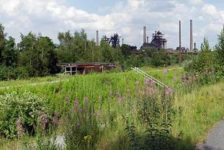You may know him as “The Treehouse Man” from Animal Planet’s Treehouse Masters, but Pete Nelson of Nelson Treehouse and Supply is also one of the eminent authorities on the subject of arboreal architecture. He builds treehouses, writes books about treehouses, and provides the world with materials and supplies for treehouses. Treehouses have been a large part of Pete Nelson’s life for more than 20 years. It was Pete Nelson’s inspiring talk at Dwell on Design in June of 2013 that led to this follow-up interview.
Why build treehouses?
I build treehouses because they move me. They get me up, excite me, and put me outdoors and in the woods. They challenge my creative side and also unite me with friends, colleagues, and, when I’m really lucky, entire communities.
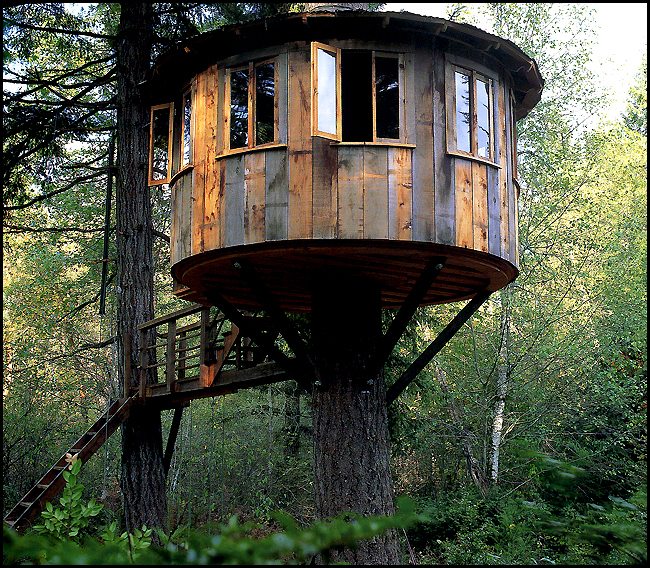 Sam’s Treehouse, Washington. Original Image Credit: Radek Kurzaj
Sam’s Treehouse, Washington. Original Image Credit: Radek Kurzaj
Speaking of the communal experience, being in a treehouse seems to fulfill some primal need; sparking an instinctive joy in people of all ages. Can you tell us what you believe seems to be behind this experience, that in some way does seem primal?
I feel that it goes way back. Climbing up into a tree calms us. Our heart rates actually drop when we get up into trees. It must have something to do with feeling safe – escaping the dangers of the forest floor. The joy comes from creating a space that is often all your own. I can remember the feelings of joy I had when I built my first treehouse as a grade-schooler. Now-a-days, I get joy from working with what nature provides (in tree form) to create similar places for others. It’s a joyful experience no matter how you slice it!
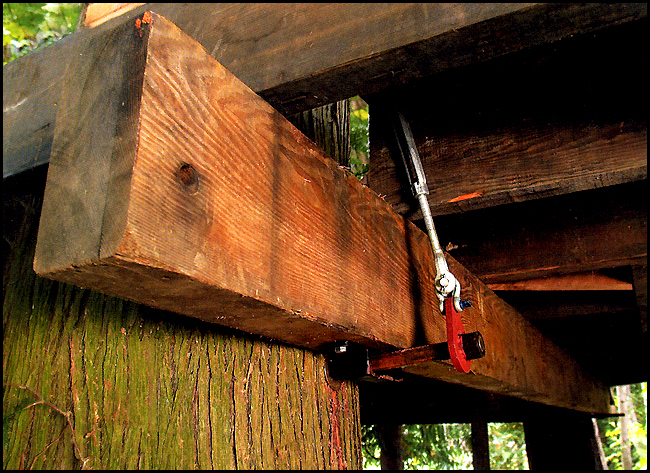 TAB (Treehouse Attachment Bolt) Original Image Credit: Michael Matisse
TAB (Treehouse Attachment Bolt) Original Image Credit: Michael Matisse
What are some elements of your treehouses that differentiate them from the neighborhood treehouse?
The two key concepts to grasp in building in trees is that trees grow and trees move in the wind. Hardware these days allow for both. The simple and strong TAB (treehouse attachment bolt) is a basic building part that we use to connect respectfully to living trees. They are big – 3” in diameter – and they withstand tremendous forces. In some cases they can hold 10,000 lbs. per bolt. We use them often, along with sometimes even more intense hardware, and they are obvious in each of our unique builds. They allow us to create just about anything we can imagine aloft, and not lose sleep at night!
So how does your company, Nelson Treehouse and Supply, use these methods and materials to minimize the impacts on the tree (or trees) that construction may have?
The arborist community has been involved in the treehouse building movement since we started meeting annually in the late 1990’s. We have found that the preferred hardware is being absorbed readily by healthy tree(s). We feel as a group that each connection to a living tree should be used to its greatest ability, and that the fewer tree penetrations, the better. Make each connection count, in other words.
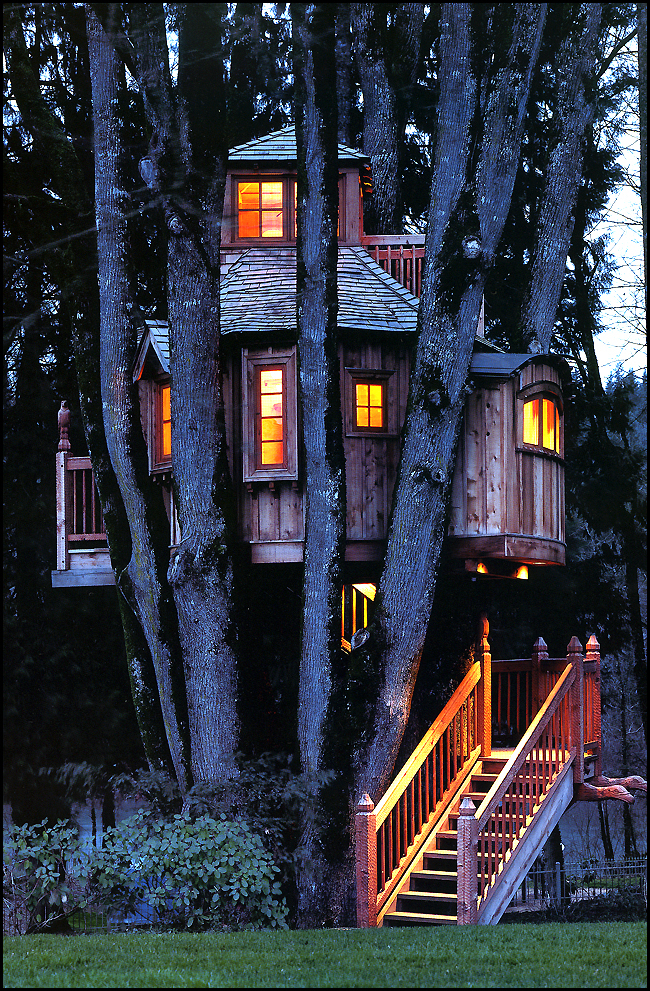 B’Ville Treehouse, Oregon. Original Image Credit: Paul Rocheleau
B’Ville Treehouse, Oregon. Original Image Credit: Paul Rocheleau
In many ways, treehouse construction is one of the best examples I know of site-sensitive and site-responsive architecture. Can you speak about this?
Well, we don’t cut down the trees to do our work, for one. We surely use wood in the construction, however. As much as we prefer to use recycled and re-purposed wood, budgets do not always allow for that. Site responsive design is imperative. The trees themselves set the parameters of every job. One of my favorite parts of this job is interpreting what the trees offer in terms of platform configuration. I am completely driven by what they allow. Only from that initial understanding does a full design take shape.
Speaking of re-purposing, I see you do a great deal of work using reclaimed materials. Can you tell us something about your particular philosophy regarding salvaged, or re-claimed materials in treehouse construction?
I initially used salvaged materials for the same reason that we all did – they were mostly free! In the true spirit of tree-fort building, you always needed to fit into the tight or non-existent budget of a 12 year old. As a result treehouses have an iconic rustic and scavenged look. It is always fun to recreate that look, but now we want the structures to last for more than just a summer or two. And the salvaged lumber business went mainstream. The prices for quality salvaged lumber shot thru the roof in the early 2000’s and now seems to be headed that way again. It feels great to use that stuff, though. To me, it’s like alchemy. We turn dark, splintery, nail-filled 2×10’s into gold! A salvaged fir floor, or wall, or anything is warm and beautiful. And you will always have a story of where it came from too!
I love the comparison between re-purposing and alchemy. Can you also tell us a bit about the practicalities of using salvaged materials on the job-site?
Using salvaged materials can be expensive. It sounds great when the friend says “come and get it”, but this is often the beginning of what can be a long journey. Cleaning and storing the material adds cost. I have collected great salvaged materials for years, and I have learned the hard way that storing lumber, for instance, can be tricky. Keep it stickered and dry. Otherwise it goes back to the earth rather rapidly. Especially where I live, outside of Seattle, where the weather is notoriously wet. It is also critical to be sure that if you plan to use salvaged timbers for structural elements – like the main beams – be sure that the wood is free of any serious knots and defects. These can compromise the strength of a beam in a big way.
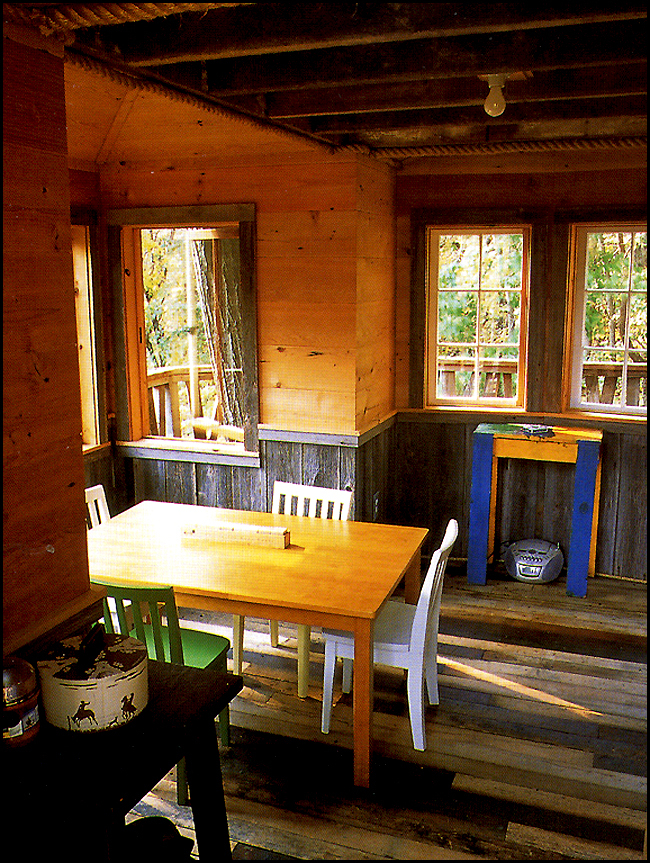 The Treehouse, New York. Using 100% salvaged materials. Original Image Credit: Pete Nelson
The Treehouse, New York. Using 100% salvaged materials. Original Image Credit: Pete Nelson
One common theme that runs through your workshops, talks, and your writing, is how to navigate the planning and building departments of local municipalities. In your most recent book, New Treehouses of the World, you speak of the possibility of developing guidelines in collaboration with King County (home of the annual Global Treehouse Symposium) officials in Washington for constructing treehouses in a responsible and environmentally sensitive manner. So how is that progressing? Is there a possibility that a set of guidelines may one day be codified?
It has progressed nicely in King County, WA. We now have guidelines that are meant to soften the visual impact of treehouses, should one appear in a riparian set-back, for instance. They mandate the use of natural materials for siding, and no direct lighting for instance. The permitting of treehouses is still a sticky wicket, however. It is hard to convince the powers that be that a certain tree can withstand the weight of a substantial structure. They like to see the stamp of a certified structural engineer to help deflect liability down the road. That is understandable. One day I hope to have the TAB understood to the point where there is a page or two in the International Building Code that can help building inspectors feel like they understand and are comfortable with a given treehouse project.
A Pattern Language by Christopher Alexander is a book with which many of our Land8 readers are familiar. How has this book influenced your philosophy and your methods of treehouse construction?
I love that book! My favorite part to tell clients about is in sighting a treehouse, try to avoid the most beautiful part of the property. If you have options, maybe preserve that part so it can become part of the view. You will never be able to improve the prettiest spot, so don’t try. I also like to go against one of the corollaries – the one that says a house or building should have a clear point of entry. I prefer to hide entrances to treehouses.
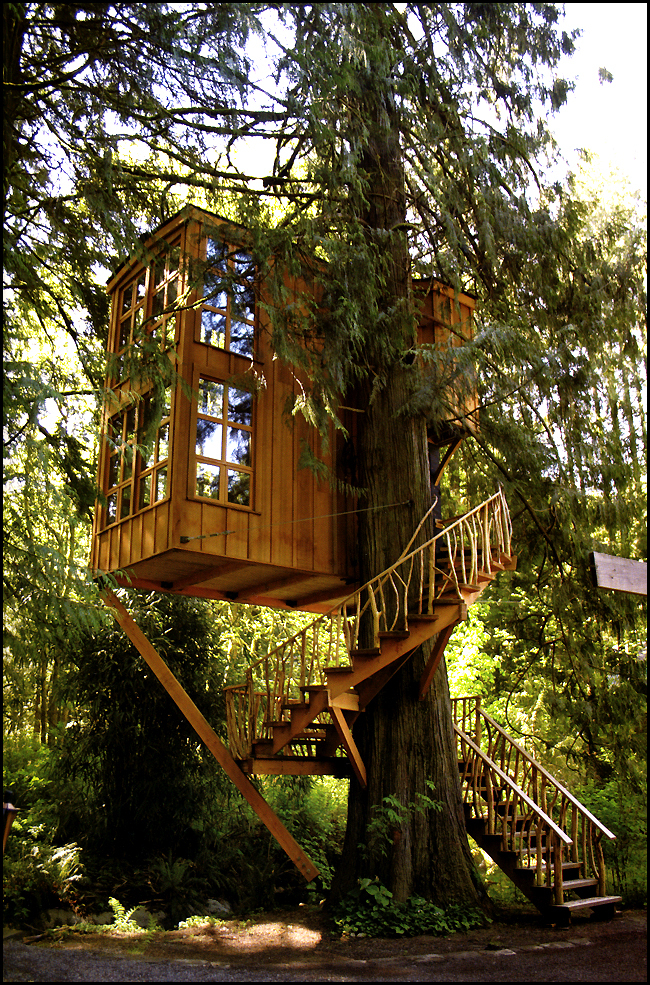 Trillium Treehouse, Washington. Original Image Credit: Pete Nelson
Trillium Treehouse, Washington. Original Image Credit: Pete Nelson
Have you built any treehouses in collaboration with a Landscape Architect?
We have worked with several wonderful landscape architects over the years. They all seem to get this concept!
Can you give us a brief rundown of different ventures you are involved in as the “Treehouse Guy”?
This career choice has opened up so many doors to me. It has been a truly glorious experience all along the way. Right now we are trying to figure out how we can start 401ks for all of us working at NTS (Nelson Treehouse and Supply). We have a successful TV show on Animal Planet called “Treehouse Masters”, and more work than we know what to do with as a result. The problem is that we all want to grow with intention rather than feel forced by demand. Our B&B, Treehouse Point, is doing well so we are starting to look for other suitable properties. The whole “e-commerce” thing has us excited. We are selling lots of treehouse plans and specialized hardware to treehouse enthusiasts all over the country. And I just finished my “how to” treehouse book – my third with Abrams – that is due out in March, 2014. I am really excited about that as it combines the nitty-gritty of how to design and build a treehouse with more sexy pictures of treehouses from all over the place. We even have a wickedly smart young guy who is about to finish a treehouse app! It’s crazy cool and takes a tour of 6 treehouses in a way that has never been seen before.
In New Treehouses of the World, you discuss the “greater good” that is done by constructing treehouses. Can you tell us some more about that?
No matter how you slice a treehouse, it’s good. They are just plain right. Short of over-serving yourself and falling out of it, there is no bad side to treehouses. The trees respond beautifully to them, and I don’t know of anyone in their right mind that doesn’t like a treehouse. They force you outdoors and into nature. They bring you together with family, friends, and, sometimes, entire communities. I really do think that world powers could come together quickly on all kinds of issues if the meeting were held aloft. We could start right here with the US Congress.
Your books speak of the ever-growing international treehouse community of owners and builders. How recent is this, and to what do you attribute this phenomenon?
This has really started to take off in the 2000’s. Things got a little quiet for us after the economy collapsed in ’08-09, but judging by the number of pictures I receive over email, treehouse building is on a global upswing. It has been slow to sink in, with only books, articles and an occasional television story on the subject. I am especially excited to see how it goes now that the TV show is out there. I think they have done a good job to show how to build respectfully and responsibly in the show – even though “education” is a swear word in television entertainment. Doing things correctly is critical if we want this phenomenon to advance.
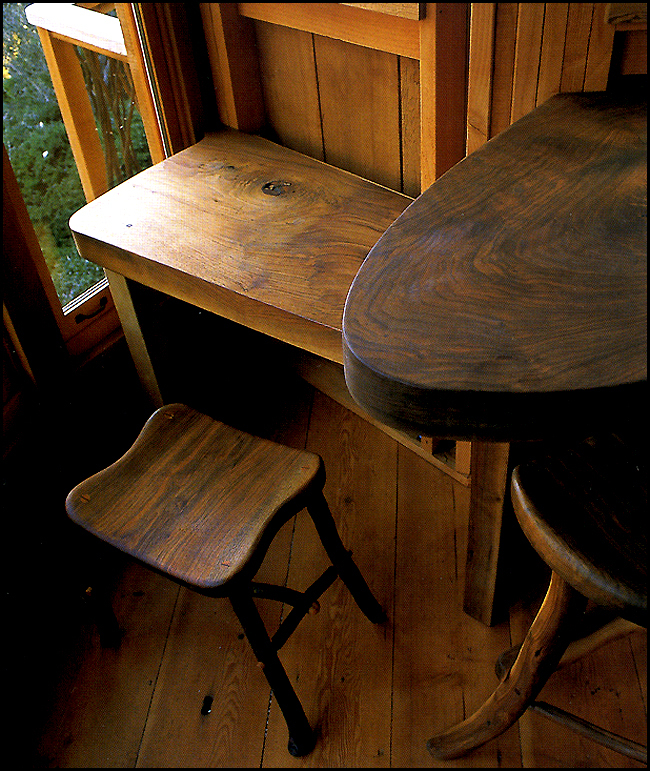 Eucalyptus Treehouse, California. Original Image Credit: Pete Nelson
Eucalyptus Treehouse, California. Original Image Credit: Pete Nelson
What do you see as one possible future for treehouse habitation?
I believe we are seeing the tip of the iceberg. People are opening their eyes to the possibilities. It is truly exciting. I don’t believe that everyone is going to move to the trees, by any means, but they will build more treehouses. That is happening already. And the vast majority are being built as a place to retreat to. A place for quiet contemplation. How great is that?!
So in closing, is there a particular up-coming project, or something “on the boards” that you would care to share with us?
We got the word that Animal Planet wants to do a Season 2 of “Treehouse Masters”. That is exciting. And I really look forward to getting the book out there so people can get a better idea of how to go about planning and building a proper “full scale” treehouse. They are no longer the structures that we were building as kids – and, of course, tree-forts are alive and well, thank goodness. I just want good information out there so nobody, including the trees, gets hurt!
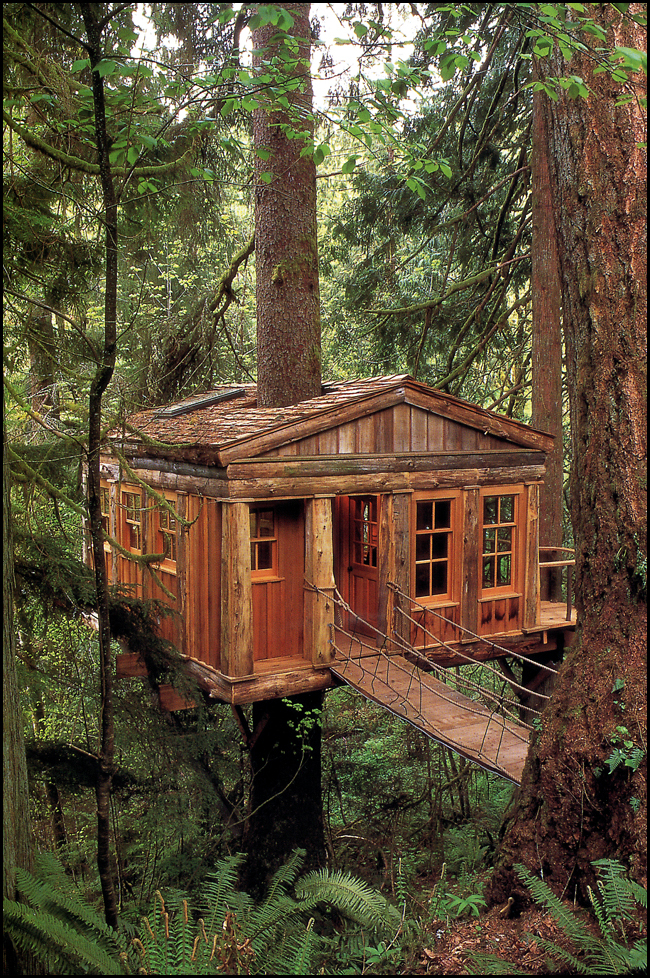 Temple of the Blue Moon, Washington. Original Image Credit: Pete Nelson
Temple of the Blue Moon, Washington. Original Image Credit: Pete Nelson
We’re all looking forward to season 2 of Treehouse Masters, your upcoming “how to” book, and of course the app. Thank you Pete for taking time out of your schedule to talk with Land8!
Check out more photos of his work on Land8, here.
Lead Image: Pete Nelson (R) at The Treehouse Workshop, Credit: Michael Matisse
Published in Blog


